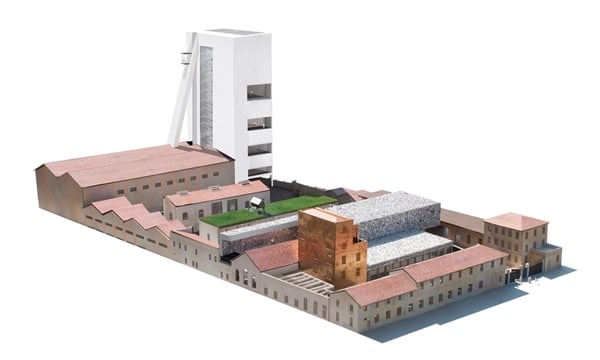Art World
Take a Look Inside Miuccia Prada and Patrizio Bertelli’s New Fondazione Prada
The opening program features work by controversial director Roman Polanski.
The opening program features work by controversial director Roman Polanski.
Christie Chu

On the cusp of the unveiling of the Fondazione Prada‘s new permanent venue in Milan (it opens May 9), the Financial Times did an in-depth interview with fashion designer Miuccia Prada and her partner in life and business Patrizio Bertelli. Peter Aspden discusses the duo’s radical approach to their private museum and how the Milan institution naturally reflects their idiosyncrasies.
The Rem Koolhaas–designed building, which boasts 120,000 square feet, is set to open next month with a new classically-themed show that looks at the way classical art was widely copied and reproduced by movements such as the Renaissance and neoclassicism (see OMA Designs New Fondazione Prada Building). True to the essence of Prada, the pair chose to move forward in history by looking back, because as Ms. Prada proudly puts it, “It would have been too obvious to open with a contemporary show.”
Indeed, confrontations and clashes are at the very heart of Prada, an Italian fashion powerhouse known for its playful, quirky style and convention-challenging collections (see Missoni and Prada Manhole Covers Beautify the Streets of Milan). And Prada and Bertelli’s aesthetics seamlessly translate into the building with its juxtaposing pieces of architecture. But what the two insist on in the interview is that their foundation is not another opportunity to market their fashion house. Prada tells FT, “I always say that I don’t want to be influenced by the art world at all. First as a matter of principle. And then because I want to be good at what I do on my own account. I don’t want artists to help me.”

Model of the Fondazione Prada Milan.
Photo: via Fondazioneprada.org.
Looking back at the brand’s history, it’s clear that Prada takes these words seriously. Unlike luxury brand Louis Vuitton, whose work with Japanese artist Takashi Murakami revived the company’s sleepy monogram in 2003, Prada never collaborated (and never will collaborate) with artists for a collection (see Cindy Sherman Reimagines Louis Vuitton Monogram).
Over the past 20 years, the Fondazione Prada, co-chaired by Prada and Bertelli since 1995, has presented over two-dozen solo shows including those by Louise Bourgeois, John Baldessari, Anish Kapoor, and Nathalie Djurberg. The foundation will keep its Venice headquarters which it opened in 2011 in an 18th-century palazzo on the city’s Grand Canal.
Most importantly for the couple however is that their foundation represents an “expression of freedom,” an entity separate from selling, business, and marketing. Antithetical to their fashion business, which went IPO in 2011 making the couple fashion billionaires, the foundation is free from commercial forces. “We don’t have to ask money from anyone. I had thought of seeking sponsorship, but the first potential sponsor I met said to me [Prada], ‘Yes, but your artists are too experimental.’ So I understand then what happens when you ask for money.”
And with the foundation’s opening program featuring Roman Polanski, the Polish film director who went under fire in the US for his conviction for having unlawful sex with a minor, it’s clear that Prada and Bertolli don’t want to compromise, and aren’t looking for collective approval. As Bertolli says with conviction, “The idea of the foundation is that it represents something significant, a proper act of research. What it is not there to do is find some kind of consensus. It is against consensus. Looking for consensus is a form of mediocrity, and that is one of the worst of human weaknesses.”

Model of the Fondazione Prada Milan.
Photo: via Financial Times.